Part 3: Addressing a lack of culturally sensitive healthcare for Cambodian and Vietnamese communities in O.C.
This story was produced as part of a larger project led by Agnes Constante, a participant in the 2020 California Fellowship, that explores the implications of the lack of access to culturally competent and sensitive health care among Southeast Asian Americans.
Her other stories in this series include:
Part Two: Mental healthcare for Cambodian, Vietnamese refugees limited by shortage of bicultural, bilingual providers
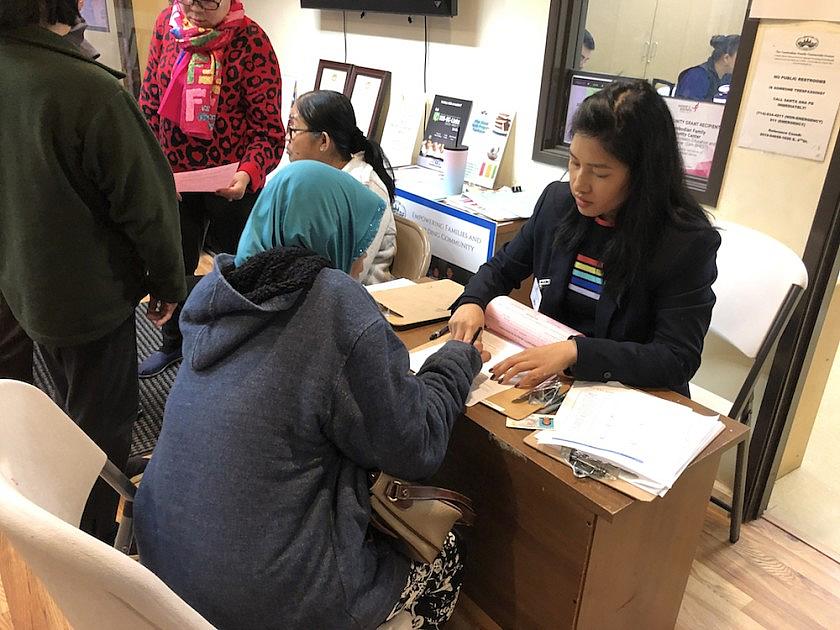
A health program director at the Cambodian Family, helps a client fill out paperwork. Many community organizations help bridge the gap between community members and healthcare providers.
(Courtesy of the Cambodian Family)
This is the third story in a three-part TimesOC series “Improving Healthcare Access for Cambodians and Vietnamese,” supported by the USC Annenberg Center for Health Journalism 2020 California Fellowship. The first story was about barriers to culturally sensitive physical healthcare. The second story was about limitations to mental healthcare access.
The Center’s engagement editor, Danielle Fox, contributed engagement support to this story, including setting up four listening sessions with 46 members of the Cambodian and Vietnamese American communities.
(My Tien Pham)
Paul Hoang makes it a point to talk about mental health whenever he can, from appearing on Vietnamese television to giving talks at high schools and universities.
Hoang is the founder of Viet-CARE, a group of mental health professionals working to end the stigma attached to mental health and address mental health disparities in the Vietnamese American community.
A primary barrier, community leaders and members say, is a lack of a bilingual and bicultural workforce. The problem is one the Cambodian community also faces.
Yet mental health is not a field that Hoang sees younger Vietnamese pursuing.
Over the past few years, he has organized the statewide Asian and Pacific Islander Mental Health Empowerment Conference, which draws a wide range of attendees, including providers and representatives from nonprofits.
Last year, the conference saw nearly 50 high school students in Fresno County, who Hoang hopes will consider entering the mental health profession.
“I try to appeal to their sense of community because everyone I spoke to, they’ve either experienced mental illness or have been impacted by someone else’s mental illness,” he said. “In our community, it’s very prevalent.”
At the very least, he hopes those who are exposed to the field can start conversations about their own misunderstandings or fears about mental health.
Orange County, according to the 2010 Census, is home to approximately 200,000 Vietnamese and about 7,000 Cambodian residents.
According to a 2018 study of Asian Americans in O.C., released by Asian Americans Advancing Justice-Orange County, the county only had one Khmer-speaking doctor.
The lack of Cambodian providers is a difficult issue to address because it requires efforts to ensure that the community obtains a higher education, said Vattana Peong, executive director of the Cambodian Family.
Seventeen percent of Cambodians hold a bachelor’s degree or higher, compared to 30% of the total U.S. population.
Seventeen percent of Cambodian Americans and 30% of Vietnamese Americans hold a bachelor’s degree or higher, which is an obstacle when encouraging youth to become the bicultural medical providers the community needs. (Courtesy of Southeast Asia Resource Action Center and Asian Americans Advancing Justice-Los Angeles)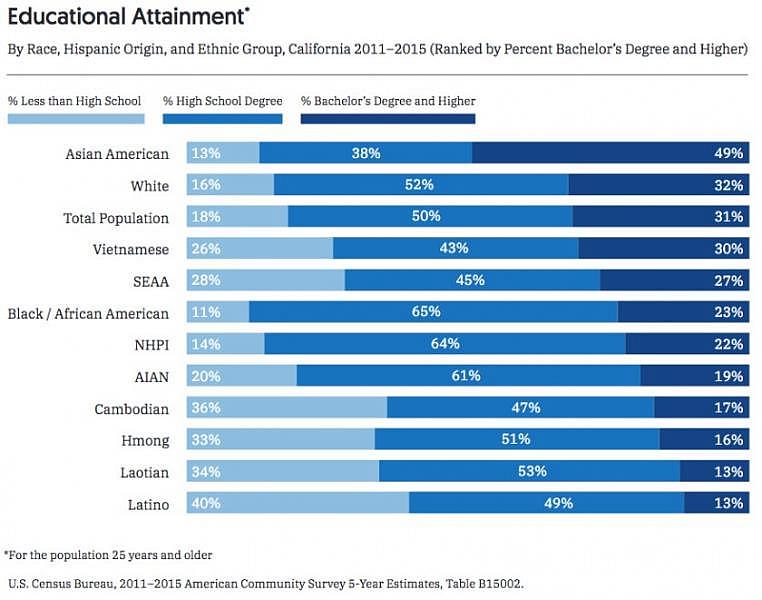
Lee Lo, former California policy manager at the civil rights nonprofit Southeast Asia Resource Action Center, said providers don’t need to share the same ethnic background as the patients they’re serving to provide culturally sensitive care.
But it’s important that providers understand the nuances of the cultural dynamics, values and religious beliefs.
“It’s a matter of understanding how we can utilize this to improve their care,” she said.
How local healthcare organizations have been addressing challenges
At the county level, the Orange County Health Care Agency has taken steps to ensure Cambodians and Vietnamese receive the health information they need.
Tamarra Jones, division manager of health promotion and community planning at the agency, said in an email to TimesOC that one way the agency does this is by partnering with several community-based groups: the Cambodian Family, Nhan Kao, APAIT and Southland Integrated Services.
For the Cambodian community, which doesn’t meet the population threshold to receive translated materials from the county, the Cambodian Family serves a crucial role in disseminating health information.
Cindy Sicheang Phou, program coordinator at the organization, saidmany Cambodians are illiterate. And even when materials are available in Khmer, they tend to be too technical.
“They trust in our understanding,” Phou said. “We’re culturally and linguistically aware of our Cambodian population and the different connotations and context needed in order to explain such matters.”
The County of Orange Social Services Agency in an email said it provides Vietnamese and Cambodian language lines through which residents can request medical interpreters when needed, and that Medi-Cal recipients are provided with a brochure to help them identify their language needs.
Steps to accommodate the needs of Vietnamese patients in Little Saigon can also be seen at medical facilities.
The physician-led 360 Healthcare, founded by Dr. Tony Nguyen, caters to the geriatric population in Orange County and serves predominantly Vietnamese patients.
At Fountain Valley Regional Hospital and Medical Center, where Vietnamese account for an estimated one-third of the patient population, more than 75 of its physicians are Vietnamese and more than half of its nurses speak the language, said Kristin Christophersen, chief nursing officer at the hospital and center.
She added that the facility also offers health education programs in Vietnamese that cover a range of conditions and topics, including diabetes, heart health, nutrition, childbirth and smoking cessation.
Heart disease and cancer are among the top three leading causes of death among Cambodians and Vietnamese in California, according to a report by civil rights nonprofits Southeast Asia Resource Action Center and Asian Americans Advancing Justice-Los Angeles.
The nonprofit Operation Be Kind delivered about 1,000 N95 masks to Fountain Valley Regional Hospital & Medical Center in April.(Courtesy of Tenet Health)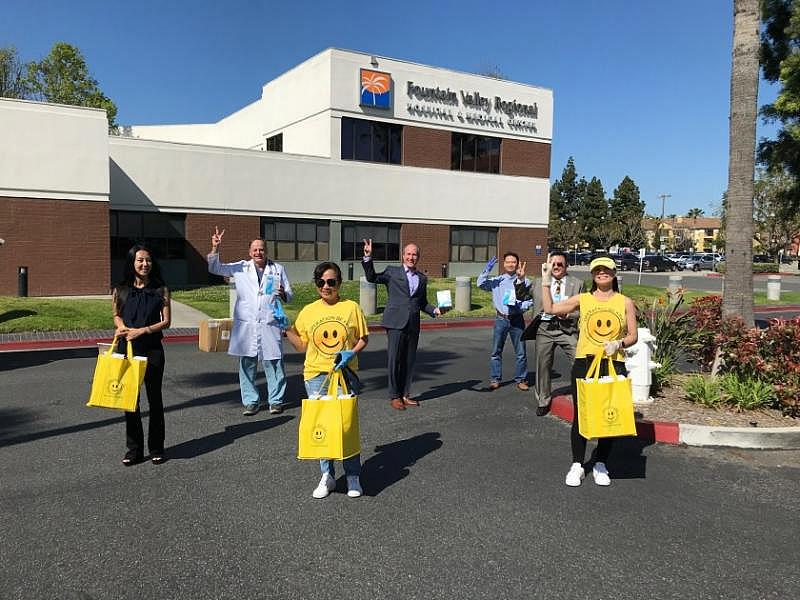
Challenges to secure more accountability and funding
At the legislative level, advocates in 2019 lobbied for a California bill, AB512, that would have increased accountability for cultural competency in mental health services for disenfranchised groups, including communities of color, the LGBTQ community and the undocumented.
Counties in California are required to submit cultural competence plans to the State Department of Health Care Services every three years, but plans aren’t reviewed at the state level, said Lee Lo, former California Policy Advocate at the Southeast Asia Resource Action Center.
She added that these plans often have minimal input from stakeholders who serve the communities the plans are created for, and that there is no state oversight.
“How AB512 came to be was really wanting to provide our partners at the local level with much more opportunity to provide input and have it be taken into serious consideration for mental health programs to be implemented,” Lo said.
The bill would have funded three staff to provide oversight by reviewing cultural competency plans submitted by each county and developing strategies to reduce mental health disparities overall, she said.
California’s legislature approved the bill, but it was vetoed by Gov. Gavin Newsom. In his veto message, Newsom cited funding concerns, though he expressed support for the intent behind the bill.
“We were really disappointed with the governor’s decision to veto, given that the funding would simply fund staff to provide oversight,” Lo said.
Lo said that many counties go each year with unspent mental health funds.
Orange County had more than $241 million of unspent funds in fiscal year 2015-16, according to a 2018 report by the California State Auditor, the second highest unspent amount out of California’s 59 local mental health agencies.
The report cited a lack of oversight on the funding that agencies receive as a reason for unspent funds and the lack of guidance on the approval process of certain mental health funds as a possible culprit.
“It’s very alarming given there are such drastic needs in multiple communities, Southeast Asian American communities for sure,” Lo said.
Paul Hoang, founder of Viet-CARE, gives a talk about mental health in order to help reduce stigma in the Vietnamese American community, as well as encourage youth to enter the mental health field.(Courtesy of Paul Hoang)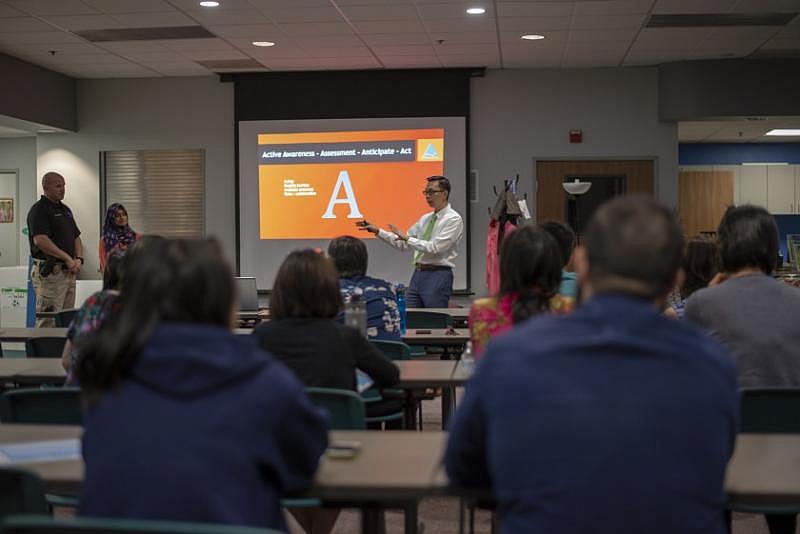
A need to support community-based organizations that help bridge gaps
Lo said there needs to be a greater emphasis on public partnerships because the way to provide culturally sensitive healthcare in the Southeast Asian community is to go through specific trusted messengers in the community.
Many times, these messengers are community-based organizations in their area, she said.
The Cambodian Family is one of those groups.
Until educational attainment is addressed, the agency depends on health navigators. It has nine who also serve as case managers. They provide clients with interpreting services, assist them with navigating the healthcare system and offer emotional support.
“Counties that are not specifically investing in the community-based organizations there are not investing and outreaching to the Southeast Asian communities because that is the only resource that community members specifically go to as a one-stop shop for everything,” Lo said.
“So whether they may be there for their immigration papers, they are also talking about their mental health concerns, as they are sitting down, and [they are] so much more familiar with folks who look like them, speak like them and understand their cultural practices.”
Peong echoed Lo’s sentiment.
“To get awareness and education about the services, people would look to places that they trust,” he said. “We have a relationship with most of our clients for over 40 years. That cannot be taken away.”
There are also other nuances to consider.
My Nguyen, 25, who moved from Kansas City to Orange County in 2018, said he was unable to build a connection with a Vietnamese therapist who did not understand his LGBTQ identity, so he decided to stop attending therapy sessions.
But finding the group Viet Rainbow of Orange County, a nonprofit founded by Vietnamese Americans with a diverse range of sexual orientations and gender identities, was more helpful to his mental health than the previous services he received.
He remembered being asked to lunch by the organization’s founder during his first meeting with the group.
“Just that one lunch time talking to him made me feel more connected than any counselor that I’ve been to,” he said.
“I think being in a space I could identify with had really helped me because it went from, ‘This is why I am’ to ‘This is what I’m going through and this is what help I need,’” he added.
Viet Rainbow of Orange County supports the mental health of Vietnamese Americans with a diverse range of sexual orientations and gender identities.(Courtesy of VROC)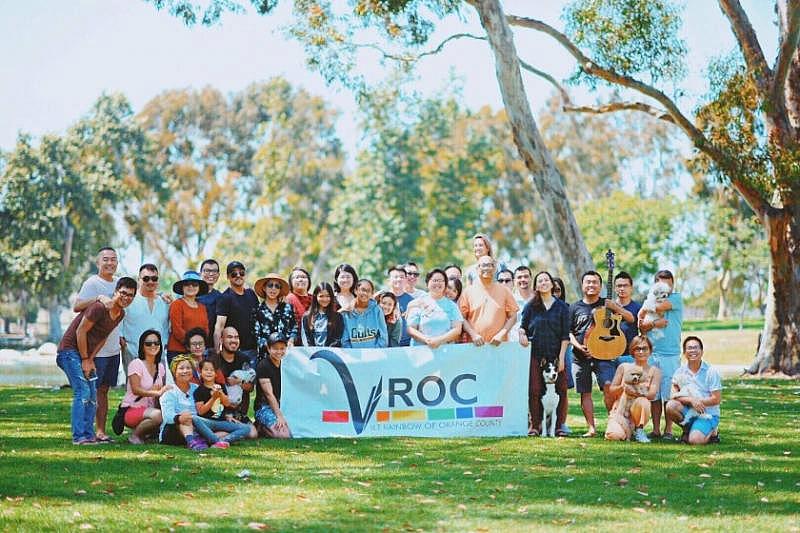
Community-defined practices
One of the efforts to reduce mental health disparities in the state is the California Reducing Disparities Project. Established in 2009, the project aims to achieve mental health equity in the African American, Latino, Native American, Asian and Pacific Islander and LGBTQ communities by funding 35 organizations to conduct and evaluate community-defined mental health practices.
Among grantees is the Cambodian Advocacy Collaborative, a group of five Southern California organizations: The Cambodian Family, Cambodian Assn. of America, United Cambodian Community, Families in Good Health and Khmer Parent Assn.
The collaborative is in its third year of a community wellness program for which it has received a five-year grant and has already seen promising results: 57.7% of participants reported reductions in the effects of past trauma, while 69.3% of those with depression-related symptoms reported reductions in symptoms.
“The fact that we see improvement at all just shows how effective the program really is,” said Pari Sabado, lead evaluator of the collaborative’s program and director of community engagement and evaluation at the Center for Health Equity Research at Cal State Long Beach.
Social activities are one component of the program. They include culturally specific ones like water blessings, as well as activities suggested by participants. Incorporating feedback from participants has helped with program retention, Sabado said.
“They feel like they’re being heard when they suggest different activities, and by catering it to and by being a little flexible in terms of listening to participants and designing activities around that, it definitely helps in keeping people interested and engaged in the program,” she said.
Addressing health disparities also requires examination of social determinants of health, said Peong, executive director of the Cambodian Family.
Areport by the Southeast Asia Resource Action Center and Asian Americans Advancing Justice-Los Angeles highlighted that Southeast Asian Americans continue to face socioeconomic insecurity across multiple measures.
Some of the findings the report highlights are that Cambodians and Vietnamese are less likely to have health insurance, have lower per capita incomes and lower rates of higher education compared to the overall U.S. population.
“Our agency has realized that we can’t be more successful if we don’t integrate the social determinants of health,” Peong said. “Even though we are not providing direct housing support or direct food assistance, we know where the places are. We know how to refer and we want to make sure they’re able to access those services.”
Community organizations like Khmer Arts Academy serve the Cambodian American population in Long Beach and Orange County.(Christina House / Los Angeles Times)
Youth-led change
Throughout a series of TimesOC listening sessions, 46 Cambodian and Vietnamese healthcare providers and community members identified a number of barriers and offered suggestions on what culturally sensitive care would look like.
Some solutions suggested included more trauma-informed care (given high rates of PTSD in the community); education for youth and families about sexual assault (an occurrence that several Cambodian young adults said is prevalent in the community); education about self-care; spaces for refugees to share their stories and experiences; facilitation of dialogue about gender identity; and education about the Southeast Asian conflicts that caused refugees to flee.
Many also suggested more wellness centers.
From 2015 to 2016, youth involved with Long Beach nonprofit Khmer Girls in Action led a campaign to bring a wellness center to the community. The efforts emerged from needs highlighted in a 2011 report published by the organization based on a survey of about 500 youth in Long Beach.
Many respondents reported depressive symptoms. About one-third said they knew someone who has been deported or is facing deportation, an occurrence that has spiked in the community in recent years and can affect families’ economic, familial and housing stability. Many experience high rates of racial profiling.
The wellness center campaign was a platform for Cambodian youth to address physical, emotional and mental health barriers they face, Joy Yanga, communications director of the nonprofit, said in an email.
The organization worked with the Children’s Clinic to bring a school-based health center to an elementary school across Long Beach Polytechnic High School, where most of its youth members are enrolled.
Youth played a crucial role in creating a center that served teen needs, Yanga said. They collected nearly 1,500 surveys to see what hours worked best for teens to use a wellness center and find out where they believed the Long Beach Unified School District should allocate funds.
As a result of youth advocacy, the center held teen-only hours, allowing students to receive confidential support, Yanga said.
She added that the campaign amplified student voices and demonstrated the importance of youth experiences and solutions.
“Teens and transitional age youth are often stigmatized or overlooked, especially low-income youth of color,” she said. “Cambodian youth felt seen and acknowledged as leaders in their community. Other Long Beach youth enjoyed the activities and also felt that a school-based wellness center would help them with their mental, physical and emotional health and [provide] a resource to help them stay in school and graduate on time.”
A tent city at Camp Pendleton in 1975 housed Vietnamese refugees who fled after the fall of Saigon. (Photo by Don Bartletti)
A Southeast Asian American issue that extends beyond Orange County
Cindy Sangalang, an assistant professor at UCLA whose research focuses on health and well-being in immigrant and refugee communities, said when it comes to addressing the needs of the Southeast Asian American community, it’s important to consider America’s role in the conflicts refugees fled from.
“I guess this is kind of controversial to say, but I think it’s important to think about the ways in which the U.S. is sort of implicated in some of the challenges that these populations face,” she said.
“For us to address the health, education and other needs of these populations, it’s really a way to think about the consequences of the war in that region and how it’s had these ripple effects, and why it’s important for us to address these needs.”
The United States carried out bombing in Cambodia over a 14-month period as part of its efforts to fight communism that at the time was kept hidden from Americans. The bombing created an instability in the country that paved the way for the rise of the Khmer Rouge regime, under which more than 2 million people died.
During the Vietnam War, the U.S. supported South Vietnam, but when North Vietnam claimed victory in 1975, hundreds of thousands fled to escape the communist regime.
Sangalang said Southeast Asian refugees have endured trauma at multiple points in their lives: before they migrated; when they arrived in the United States, adjusting to a new country; in the present with a rise in deportations; and in moments throughout, with the challenges of continued socioeconomic insecurity.
“When we’re thinking about vulnerable populations in the U.S., sometimes the needs of these communities go hidden to many Americans,” she said. “It’s important to highlight these challenges and think about the connection of the U.S. to the region and why they’re here.”
TimesOC will host an online community forum to continue these conversations about ways to improve healthcare access for Orange County’s Southeast Asian population. Follow @timesocofficial on Twitter for updates.
[This story was originally published by TimesOC].

